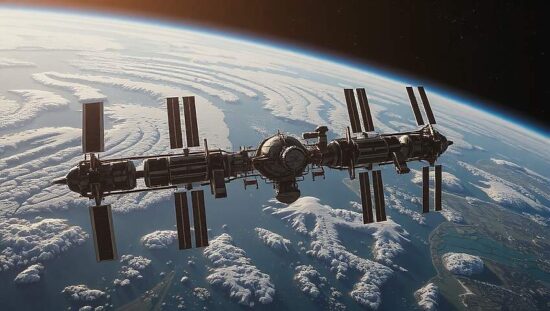The International Space Station’s time is coming to an end. The station was launched in 1998 and was initially designed to last for about 15 years. However, the station has been extended several times and is expected to continue serving humanity for several more years. Nevertheless, it is clear that in the near future, the world will move towards building national stations, as China has already done.
Despite the successful international experience in building and operating the International Space Station, it also highlighted the difficulties of such a collaboration. Some experiments were too sensitive and delicate to involve the other side, primarily the United States. Additionally, the work of the ISS was often used as a bargaining chip in political negotiations.
Russia has been working on building its own national space station, ROS (Russian Orbital Station), for several years. Vladimir Solovyov, the chief designer for manned space systems at the Russian rocket and space company Energia, announced that the first scientific energy module is planned for launch in December 2027. The module will be responsible for generating power, oxygen, water supply and waste disposal for the entire station. Meanwhile, the ISS will continue to operate, avoiding any interruption in manned flights.
Bringing the energy module into orbit marks the beginning of the first phase of building the ROS. By 2030, a total of four modules will be launched and assembled. Following the energy module will be the base module, which can accommodate up to four cosmonauts, the airlock module and the universal node module, which will serve as the heart of the entire station, connecting the other segments of the ROS.
The second stage of developing the ROS will begin after 2030. By then, two additional modules are expected to be added. One of them is the laboratory module, which will be optimized for various experiments on board the station. It will have several specialized workstations equipped with equipment for experiments. Additionally, a cargo airlock will be added, allowing experiments to be conducted on the surface of the station without having to perform them in open space. This approach has already been successful with the Russian module Nauka and the Japanese module Kibo.
Furthermore, a production module is planned to be added, where alloys and other materials will be produced under the conditions of weightlessness. Today, experiments on the ISS are conducted to produce alloys and crystallize proteins, which can be successfully applied on Earth.
Besides the laboratory and production modules, there are plans to expand the ROS. One possibility is to bring an inflatable experimental module into orbit and operate it as part of the station. Such modules are very promising and allow for the creation of larger spaces.
Another option is to establish a small group of maneuverable spacecraft based on the station. Cosmonauts of the ROS will be able to use, repair and modernize small spacecraft as needed. In other words, from the ROS, a group of automated satellites can be launched, which can be used, for example, for remote sensing of the Earth. In case of need, these satellites can be refueled or repaired on board the station.
One of the innovations of the ROS compared to the ISS is an atypical orbit for previous-generation space stations. The ROS will operate in a near-polar orbit with an inclination of 96.8 degrees. Such orbits host some Earth-observation spacecraft.
This will allow the ROS to move over the entire territory of Russia and over the polar regions of our planet. The ISS is less convenient in this regard – its orbit inclination of 51.6 degrees is closest to the city of Saratov. Even Moscow and St. Petersburg are difficult to observe at such an inclination.
However, a near-polar orbit also has disadvantages. Due to the proximity to the Earth’s radiation belts, the flight time of cosmonauts is likely to be limited to six months or even less than a standard flight. Consequently, the station will not be continuously inhabited, as the ISS is today, but will be preserved between individual expeditions, as was the case with the Salut-class and Mir stations. The International Space Station does not have this option and at least one crew member must remain in each segment.
The height of the orbit will also be lower, around 350 kilometers. The ISS operated at a lower height when the Space Shuttle was in use, as it was necessary for the US space transporters.
To build the ROS, a total of 34 launch vehicles will be required. According to Vladimir Koschewnikov, the chief designer of Energia, 15 launches of the heavy Angara-A5M rockets and 19 launches of medium-heavy Sojus-2.1b rockets are planned for the construction and supply of the station. For the first phase, all “Progress ROS” cargo ships are planned to be launched from the Baikonur spaceport. However, starting from 2031, launches will occur from the Wostotschny spaceport.
In the end, Russia will have its own orbital station, where experiments can be conducted without the presence of other countries. It will also serve as a platform for developing the latest high-tech solutions. Perhaps it will also usher in a new phase of orbital work and preparation for interplanetary missions.





